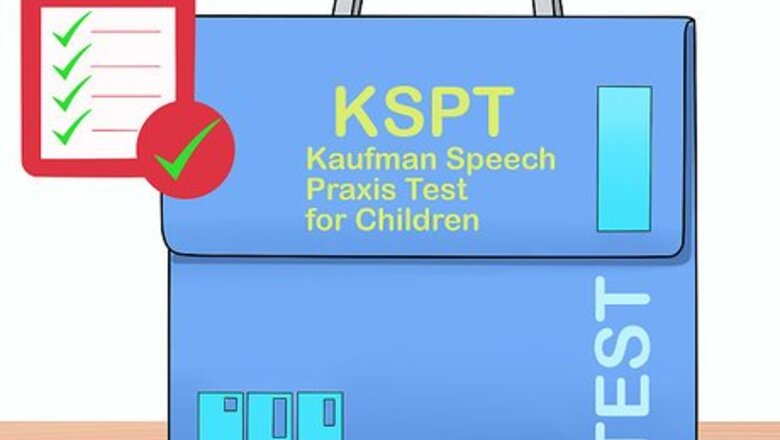
views
Starting with the Cards
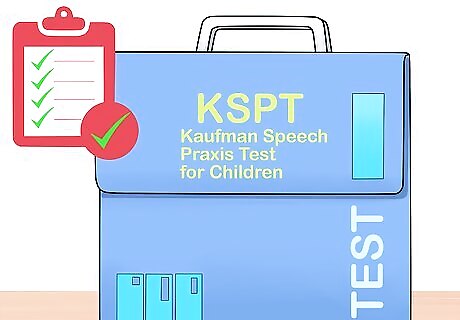
Determine the child’s speech difficulties. To begin working with the Kaufman cards, you must know what kit level to use. That means understanding what vowels, consonants, and syllable shapes the child has already mastered. The Kaufman Speech Praxis Test for Children is often used to determine a child’s level. It’s best to have a speech therapist administer the test to the child to ensure that the results are accurate. A therapist may also have another method of testing for child that they prefer.
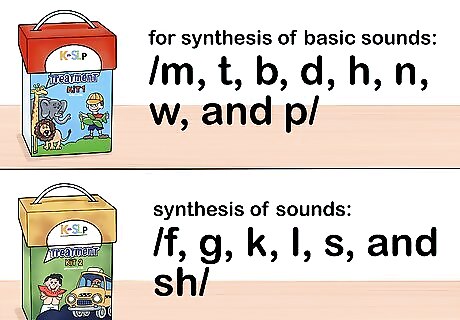
Choose the appropriate Kaufman treatment kit level. Once you understand what the child’s speech issues are, you can choose the appropriate card kit to help with their difficulties. There are two levels of Kaufman cards: basic and advanced. Each is geared toward addressing specific speech sounds to help the child develop functional, expressive language. The Kaufman Treatment Kit 1 is considered the basic level, and is geared toward children between the ages of 2 and 8. It targets the synthesis of basic sounds, such as /m, t, b, d, h, n, w, and p/. The Kaufman Treatment Kit 2 is considered the advanced level, and is geared toward children between the ages of 4 and 10. It targets the synthesis of sounds such as /f, g, k, l, s, and sh/. It also blends /s, r, and l/ sounds. If you’re choosing Kaufman cards to use at home, it’s best to consult with a speech therapist. Because they can evaluate your child’s speech difficulties, they will be best able to determine which Kaufman cards kit would work.
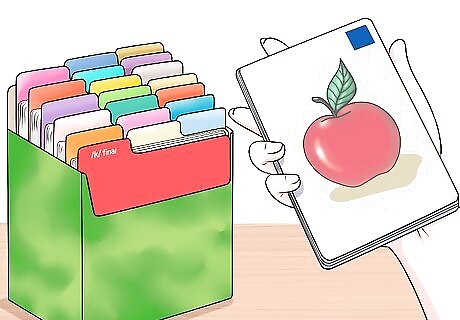
Break the kit’s cards into sets. The Kaufman treatment kits contain between 250 and 285 cards each. You’ll overwhelm a child if you expect them to go through all of the cards in one sitting. Instead, separate the cards into smaller, more manageable sets of 10 to 20 cards that you can work with before taking a break. It’s best to start with smaller sets of cards until you know the amount that works best for the child.
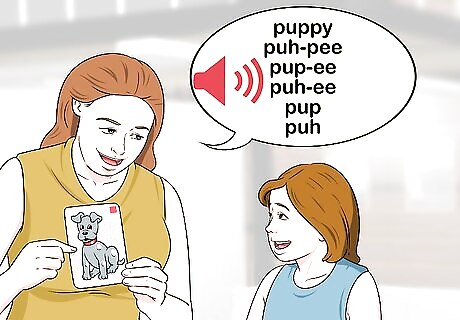
Read the cards aloud to the child. When you’re first introducing the Kaufman cards to the child, it’s best to start slow. Show them the card with the drawing of the object, and read the approximations of the word to the child. You don’t have to have them repeat the sounds at first; allow them to just make the association between the image and the word or sound. Each Kaufman card lists several approximations of the word depicted on it. They’re listed successively in order of difficulty, with the easiest sound being at the bottom of the list. When you are first reading the cards to the child, you might simply read the full word and then the easiest approximation at the bottom of the list to avoid overwhelming them. You can move on to the other approximations in future sessions.
Learning the Syllable Sounds
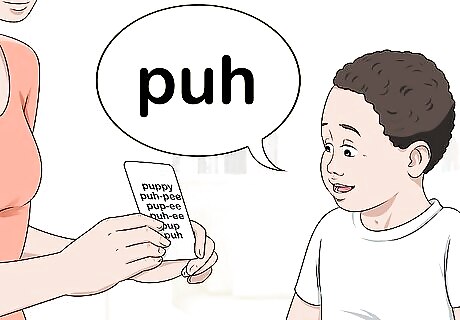
Ask the child to repeat the first syllable sounds on the cards. After you’ve familiarized the child with the images on the cards and the words or sounds, it’s time for them to work on making the sounds themselves. Hold up the cards and read the easiest approximation of the word. Have the child repeat it to the best of their ability.
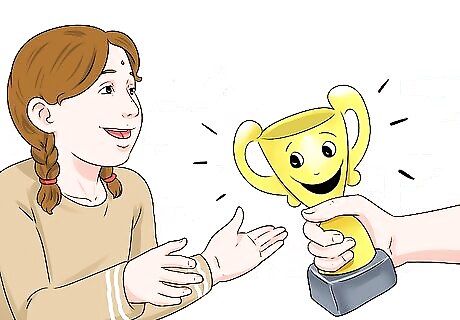
Reward the child after they complete each set of cards. The process can be frustrating for children so it’s important to keep them motivated. After the child works through a set of cards, give them a small reward and a break from the cards. Once they’ve enjoyed the reward, you can move onto the next set of cards. The reward should be simple, such as playing with a favorite toy or game. Make sure that the child understands what the reward is before you begin working with the cards so they have it in their mind as motivation.

Repeat the process. With childhood apraxia of speech, a child may need up to 3000 productions of a sound combination or word to develop the muscle memory needed for that particular sound. That means you have to commit to using the cards with the child consistently and working on the same sound combinations and words until they master them. If you are using the cards at home, talk to your speech therapist about how often you should have your child work with them. As you work through the cards, try to move along the speech approximations so the child gets closer to saying the actual word. Work slowly, though. You don’t want to frustrate the child by expecting them to do something that they’re not ready for.
Progressing to the Next Stage

Ask the child to make the card sounds from memory. When the child can successfully repeat the actual word with your prompting, it’s time to work on spontaneous recall. Hold up the card, and have the child say the word or one of the approximations without you saying it first . This is often the most challenging part for children with speech difficulties. It’s important to be patient and allow the child time to recall the word or approximation. If the child struggles with a certain words or approximation, repeat it for them. Set those cards aside, though, so you can single them out for extra work.
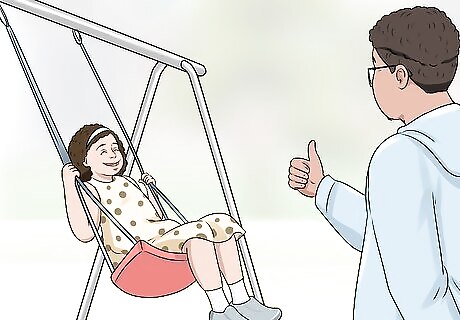
Offer a special reward after each successful set of cards. Because spontaneous recall can be very difficult, it’s especially important to keep children motivated. After they complete each set of cards, you should give them a special reward. For example, instead of simply allowing them to play with a certain toy, you might allow them to go outside on the swings. Be sure to gear the reward toward the child. It’s important to know what their highly preferred activities are in order to devise the best way to reward them.
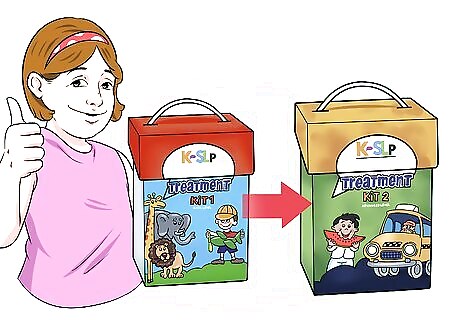
Upgrade to the advanced kit when the child is ready. Continue working with the child until they can recall all of the words on the cards. Once they are confident with the cards in the kit, you can move on to the advanced kit. If they are already working with the advanced kit, consult with a speech therapist to see what steps to take next. After the child completes the advanced Kaufman kit, completing the sessions without any cards or pictures is often the next step.

















Comments
0 comment